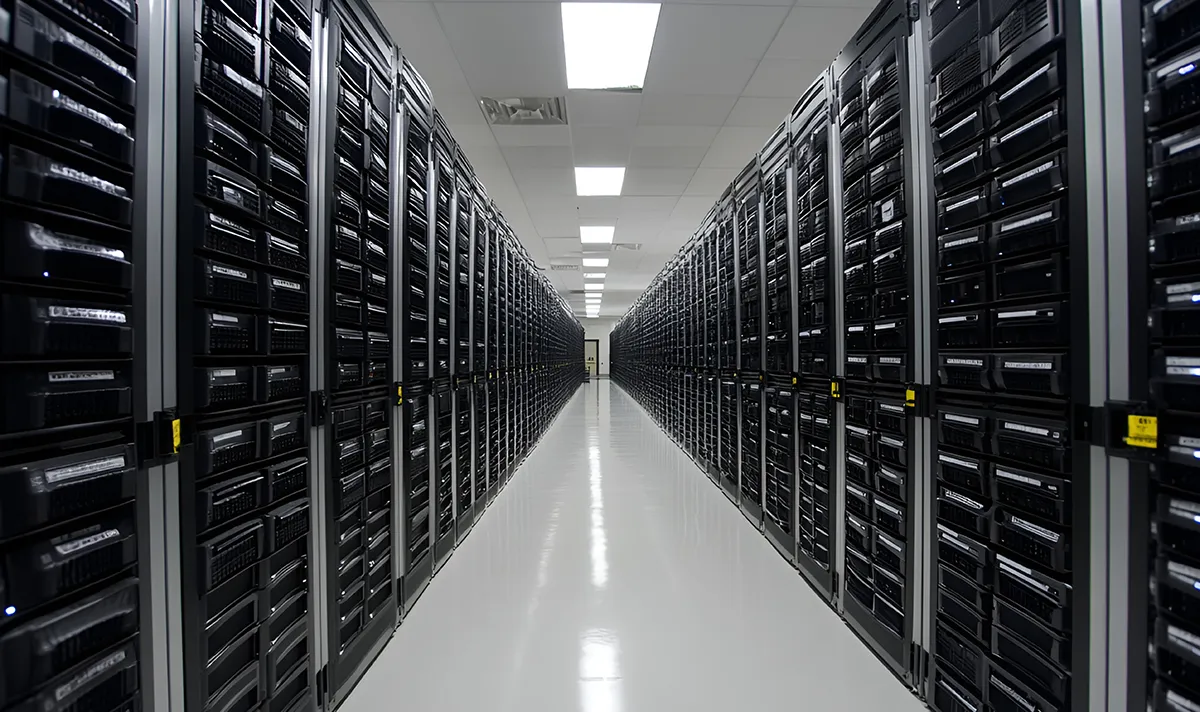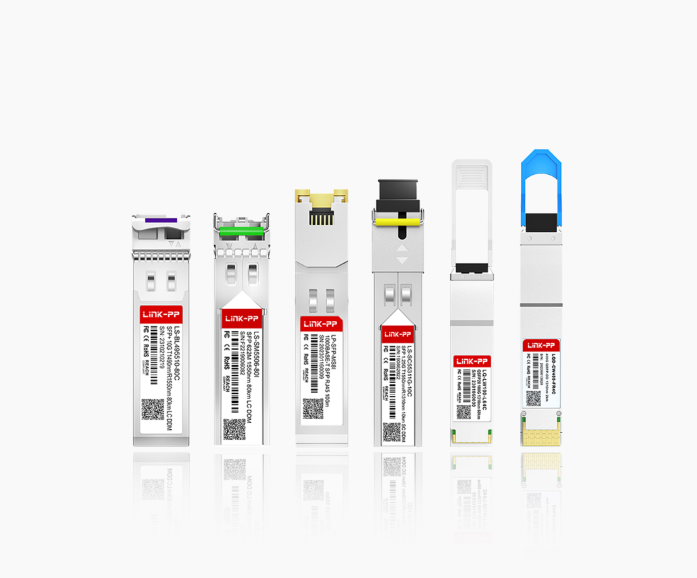
In an era defined by data, the demand for computing power and storage is exploding. This growth comes with a significant environmental cost; data centers are estimated to consume 1-2% of global electricity. The quest for sustainability is no longer a niche concern but a core operational necessity. Building a sustainable data center involves a multi-faceted approach, from leveraging renewable energy to advanced cooling systems. However, one of the most impactful yet often overlooked components lies at the heart of data transmission: the optical transceiver.
This article delves into how these critical devices are not just facilitators of high-speed communication but powerful enablers of a greener, more energy-efficient data center infrastructure.
♻️ The Sustainability Challenge in Modern Data Centers
Before we explore the solution, it's crucial to understand the problem. The environmental impact of a data center is primarily measured by its Power Usage Effectiveness (PUE), a ratio of total facility energy to IT equipment energy. An ideal PUE is 1.0, but many older facilities operate at 1.5 or higher, meaning for every watt powering a server, half a watt is used for cooling and overhead.
The key challenges include:
Immense Energy Consumption: Servers, storage, and network hardware are power-hungry.
Heat Generation: This energy consumption generates massive amounts of heat, requiring energy-intensive cooling systems.
E-Waste: Rapid hardware upgrades lead to significant electronic waste.
Carbon Footprint: The collective energy draw contributes substantially to CO₂ emissions.
Addressing these issues requires innovation at every level, including the very components that connect everything together.
♻️ What Are Optical Transceivers and Why Do They Matter?
At its core, an optical transceiver is a device that transmits and receives data. It converts electrical signals from network switches and servers into light pulses (and vice-versa), which are then sent over fiber optic cables. They are the essential "translators" of the digital world, enabling high-speed, high-bandwidth communication over long distances.
Their role in sustainability is profound. By improving the efficiency of data transmission, they directly reduce the energy load of a data center's core networking fabric.
♻️ The Green Engine: How Optical Transceivers Drive Sustainability
The latest generation of optical transceivers contributes to sustainability in several key ways:
➤ Higher Data Rates, Lower Relative Power
Modern transceivers pack more data into a single unit. For instance, a single 400G (Gigabit) transceiver can often replace four 100G transceivers. This consolidation reduces the number of physical devices, switch ports, and cables required, leading to a lower overall power draw per transmitted bit of data.
➤ Advanced Energy-Efficient Designs
Manufacturers are now prioritizing low-power designs. This involves using more efficient lasers (like VCSELs for short-reach) and advanced circuitry that minimizes power consumption during both active transmission and idle states. Choosing energy-efficient data center components like these is a direct step toward a lower PUE.
➤ Reduced Cooling Loads
Higher efficiency means less wasted energy, which in turn means less heat generated. A networking aisle populated with low-power optical transceivers produces significantly less heat, reducing the burden on the CRAC (Computer Room Air Conditioning) units and allowing for more economical cooling techniques, such as free-air cooling.
➤ Enabling Denser, More Optimized Architectures
Technologies like network disaggregation and scalable cloud infrastructures rely on high-speed, low-latency interconnects. Efficient optical transceivers make these architectures feasible, allowing for better resource utilization and preventing the over-provisioning of energy-inefficient hardware.
♻️ A Deep Dive into Modern Optical Transceivers for Green Initiatives
To truly appreciate their contribution, we need to look at the specifics. The market offers a variety of form factors and types, each suited for different applications within a data center, from short-reach intra-rack connections to long-haul links between data centers.
Key Form Factors & Their Use Cases:
SFP / SFP+ / SFP28: The workhorses for 1G, 10G, and 25G connections, often used for server-to-leaf switch connections.
QSFP / QSFP28 / QSFP-DD: The backbone of modern spine-leaf architectures, supporting 40G, 100G, 400G, and now 800G data rates. These are critical for high-density, low-power aggregation.
When selecting a optical transceiver for a sustainability-focused project, key specifications to consider are power consumption, data rate, and reach. The goal is to use the most appropriate, efficient module for each specific link to avoid over-provisioning and wasted energy.

Spotlight on LINK-PP: Engineering for a Sustainable Future
In the competitive landscape of optical transceivers, some brands stand out for their commitment to performance and efficiency. LINK-PP has established itself as a key player by designing transceivers that directly address the power and thermal challenges of modern data centers.
A prime example is the LINK-PP QSFP-DD-400G-SR8 transceiver. This module is engineered for high-density, short-reach applications within a data center hall.
Why the LINK-PP QSFP-DD-400G-SR8 is a Smart Choice for Green Data Centers:
High Efficiency: It delivers 400G of bandwidth while maintaining a optimized power budget, significantly reducing watts-per-gigabit compared to older generations.
Thermal Management: Its advanced design ensures lower operating temperatures, which contributes to a reduced cooling load. This makes it an excellent component for implementing effective data center cooling strategies.
Reliability & Longevity: High reliability means less frequent replacement, reducing e-waste and the carbon footprint associated with manufacturing and shipping new components.
Integrating high-performance, low-power modules like those from LINK-PP is a practical step in building a resilient and sustainable network infrastructure.
Comparison of Transceiver Generations & Power Impact
The following table illustrates the efficiency gains achieved by newer transceiver technologies, a critical consideration for anyone planning a data center carbon footprint reduction.
Form Factor | Data Rate | Typical Power Consumption | Key Application | Sustainability Impact |
|---|---|---|---|---|
SFP+ | 10G | 1.0 - 1.5W | Server Access | Baseline |
QSFP28 | 100G | 3.5 - 4.5W | Aggregation / Spine | ~60% less power per gigabit than 10x SFP+ |
QSFP-DD | 400G | 8 - 12W | Core / High-Density Spine | ~70% less power per gigabit than 4x QSFP28 |
LINK-PP QSFP-DD-400G-SR8 | 400G | < 10W | Short-Reach Core | Industry-leading efficiency, reduces cooling needs |
Table: Power consumption is approximate and can vary by manufacturer, reach, and technology. Values are for illustrative purposes.
♻️ The Future: Co-Engineered Sustainability
The journey doesn't stop with today's 400G or 800G modules. The future of optical transceiver technology in green IT is incredibly promising.
Co-Packaged Optics (CPO): This emerging technology moves the optical engine closer to the switch ASIC, drastically reducing the power needed for electrical signaling between components. This could reduce network energy consumption by up to 30% and is a key frontier for sustainable data center infrastructure.
Silicon Photonics: This technology integrates optical components onto a silicon chip, enabling mass production of smaller, cheaper, and more power-efficient transceivers. Brands like LINK-PP are actively investing in such R&D to push the boundaries of performance per watt.
Intelligent Power Management: Future transceivers will feature more granular power monitoring and adaptive power settings, scaling energy use dynamically based on real-time data traffic.
♻️ Conclusion: A Brighter, More Efficient Path Forward
Creating a sustainable data center is a complex puzzle, and every piece matters. While grand initiatives like solar farms and liquid cooling capture headlines, the silent, steady work of components like optical transceivers forms the bedrock of true efficiency.
By prioritizing high-efficiency, low-power optical components from innovative providers like LINK-PP, data center operators can achieve significant reductions in both energy consumption and operational costs. The move towards higher data rates and smarter technologies is not just a path to greater speed—it's a fundamental stride towards a more sustainable digital future.
♻️ FAQ
What makes an optical transceiver "green"?
An optical transceiver is green if it uses less energy. It also lasts longer than regular ones. Makers use eco-friendly materials and smart designs.
Tip: Check for energy-saving labels when you buy transceivers.
How do green optical transceivers help you save money?
Green transceivers use less power, so you pay less for electricity. You do not need to replace them as often.
Savings Type | How You Benefit |
|---|---|
Energy bills | You pay less money |
Equipment | You buy fewer parts |
Can you upgrade your old data center with green optical transceivers?
Most data centers can use green optical transceivers. You should check if your cables and switches work with new devices.
Try new transceivers first
Get help from your vendor
Do green optical transceivers affect data speed or quality?
Green optical transceivers give you fast speeds and strong signals. They send data quickly and keep your network working well.
Note: Green technology still gives you good performance.



